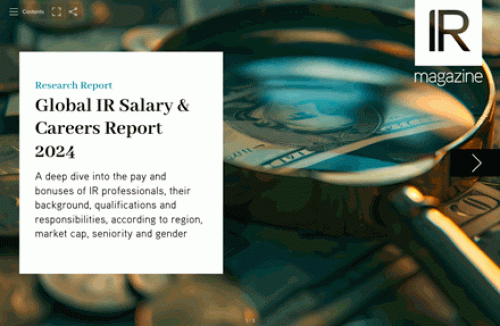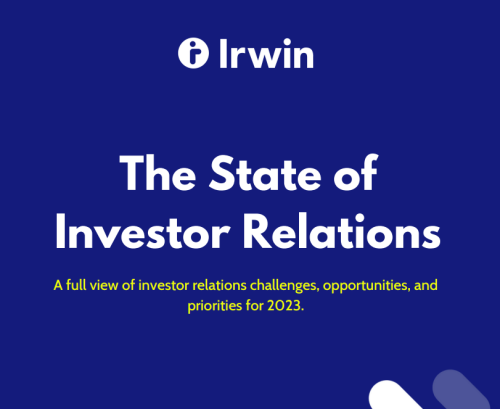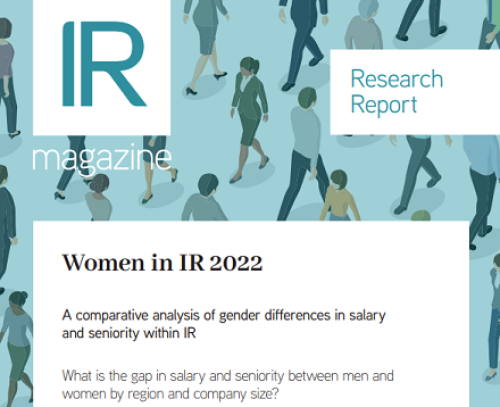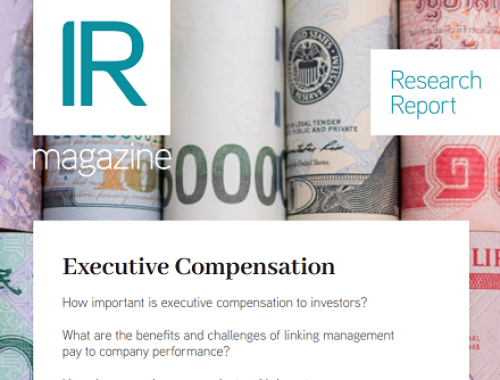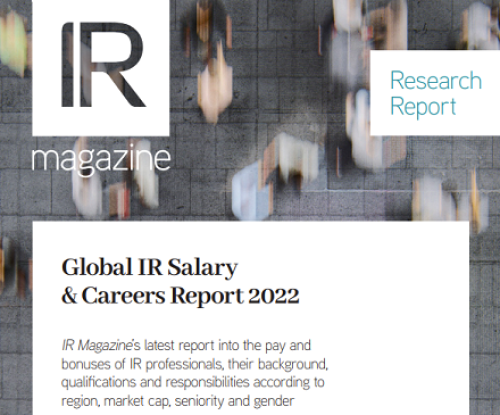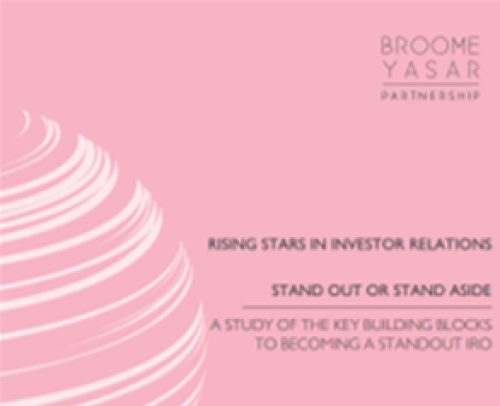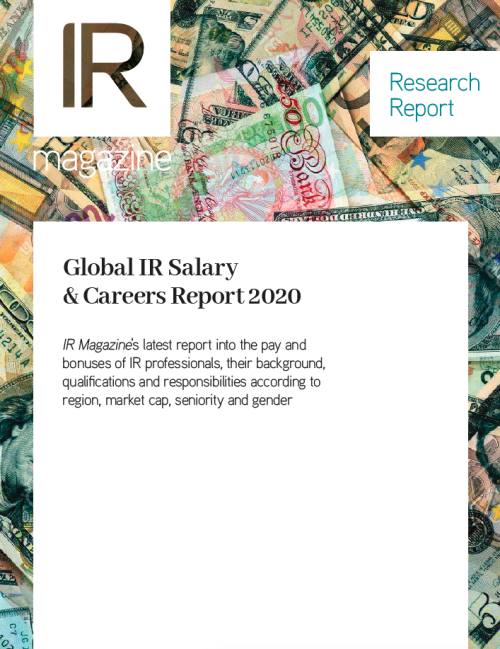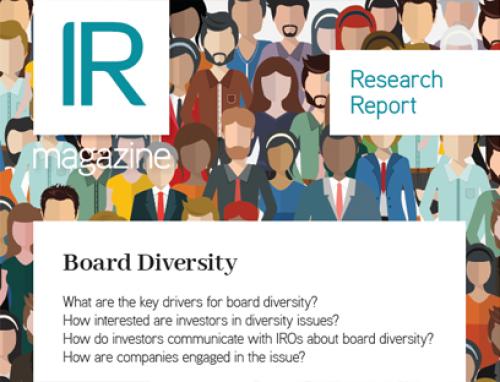How has the IR profession evolved in Italy over the past few years?
It has gained more recognition. There are increasing numbers of senior professionals coming into the role from either a sell-side or corporate background and becoming trusted partners of company CFOs and CEOs. As a result, we speculate a small increase in compensation packages for IR practitioners in the region. Overall, the size of IR teams within companies is growing due to the C-suite recognizing the growing importance of the IR function.
What would you say are the top challenges experienced by IROs in the region at this time?
The top challenges are to be found in the overall perception and recognition of the IR function (especially at small and mid-caps), remuneration and limited opportunities of career progression beyond IR. Though the profession has made some strides, there is a general tendency on behalf of company C-suites to think about IROs as tier-two executives. But the perception of the role appears to be proportional to company size: larger companies with a global shareholder base tend to attach a lot of importance to IROs.
Small and mid-caps paint a different picture. There seems to be a limit to the career path of IROs at small and mid-cap companies, with only a few exceptions who have been promoted to CFO or planning functions.
What IR strategies are mostly used to attract and retain investors in Italy?
It really depends on the company, the industry and the IRO. Mostly, the best approach to investor targeting, engagement and retention is not to be reactive but proactive. As a company, your engagement with shareholders must be thorough and frequent.
Larger companies also need to have investor targeting exercises and calibrate their strategies on whether they are targeting active or passive investors. That’s where investor perception strategies to gauge sentiment are crucial to businesses. That said, the tools available and used to craft a proper shareholder targeting strategy may also vary depending on market capitalization. The devil is in the detail.
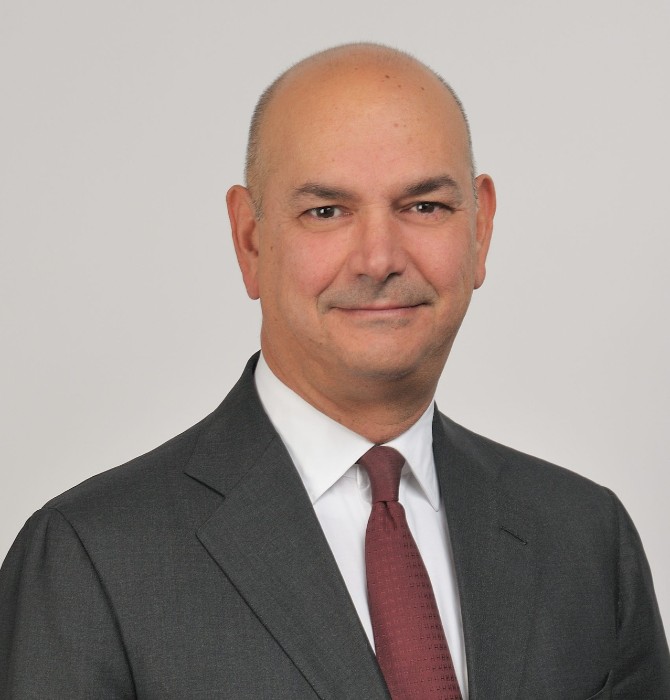
What would you say sets the Italian IR market apart from other countries?
There are very few international professionals in Italy occupying IR roles. Companies would welcome and benefit from foreign IROs bringing their experience in international capital markets to Italian businesses. Career progression for IROs in Italy remains challenging and statistical research shows that remuneration for Italian IROs is lower than in the rest of Europe.
How much attention are companies paying to ESG factors?
It depends on the size of the company. Large caps in Italy place tremendous focus on ESG factors and disclosure, as there is an expectation on behalf of investors for firms to be compliant with mandatory requirements and to disclose voluntary metrics. Those metrics are going to influence investors’ decision-making processes. At larger caps, IROs also spend more time focusing on ESG metrics, crafting strategies and communicating with ESG investors and stakeholders. While small caps still have to comply with mandatory disclosure requirements, they might overlook some aspects that fall under voluntary disclosure because of limited resources.
Which part of the ESG acronym is more relevant to investors in Italy?
When it comes to companies, there’s much more attention to the E. That’s simply because climate change and environmental risks are top of the agenda for companies and investors alike. In addition, the Bank of Italy has now started to play a more active role in sustainable finance through the various functions it performs.
Investors tend to focus more on the G; governance is an uncontrollable factor. The largest scandals in Europe have happened because of poor governance and investors have become wary of that and want to know how companies manage and mitigate risks. As far as global institutional investors are concerned within their ESG approach, I would say the G counts for more than 50 percent of the ESG acronym.
If you could pass on one IR lesson to your peers, what would that be?
If everything is going well, communicate. In an adverse environment, communicate even more. This is a lesson many IROs in Italy had to learn the hard way in early 2016 when the Italian banks experienced a profound lack of investor confidence due to the high number of non-performing loans. Crisis management is important and during that time you need to communicate more than usual in a proactive way.

